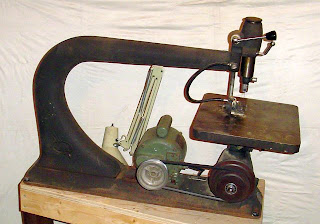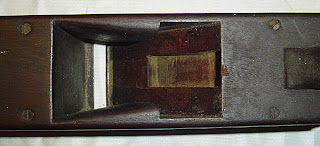So on Christmas Eve, I got to open it once everything had settled down in the house.
Stunned. Speechless. Awestruck. Giddy. Flabbergasted. Overwhelmed. Any one of the items in this box would have put a big smile on my face and fit the bill. Instead I was sent a bounty of goodies that never seemed to stop. I was sent to the kitchen as SWMBO suspected shavings were used as packaging, and she was correct. Once I moved the shavings out of the way, I found:
- A short personal note from Galootaclaus, including some of the history of the included items.
- Olive wood (cut in '98, milled into boards in '99, and drying in the shop rafters since)
- A Tape of St Roy episodes (something I've never had an opportunity so see as it's not carried on PBS in my area)
- A gorgeous little double ended calliper about 3.25" long, and opens to 1.75" (no maker's mark I can locate)
- 5 books:
- The Art of Making Elegant Jewelry Boxes (Design & Techniques) by Tony Lydgate
- The Best of Wood Boxes (Ideas & Plans for 59 Unique Wood Boxes) Edited by R. Adam Blake
- Box Making Basics (Design, Technique, Projects) by David M Freedman
- Marvelous Wooden Boxes You Can Make by Jeff Greef
- Award-Winning Boxes (Design & Technique) by Tony Lydgate
I don't quite know what to say, or how to say it, so I'll keep it simple. Thank You Michael. From the bottom of my heart.
That Olive looks gorgeous, and I'll be saving it until I can find a fitting project. I can't begin to tell you how enjoyable you made my Christmas.

















































